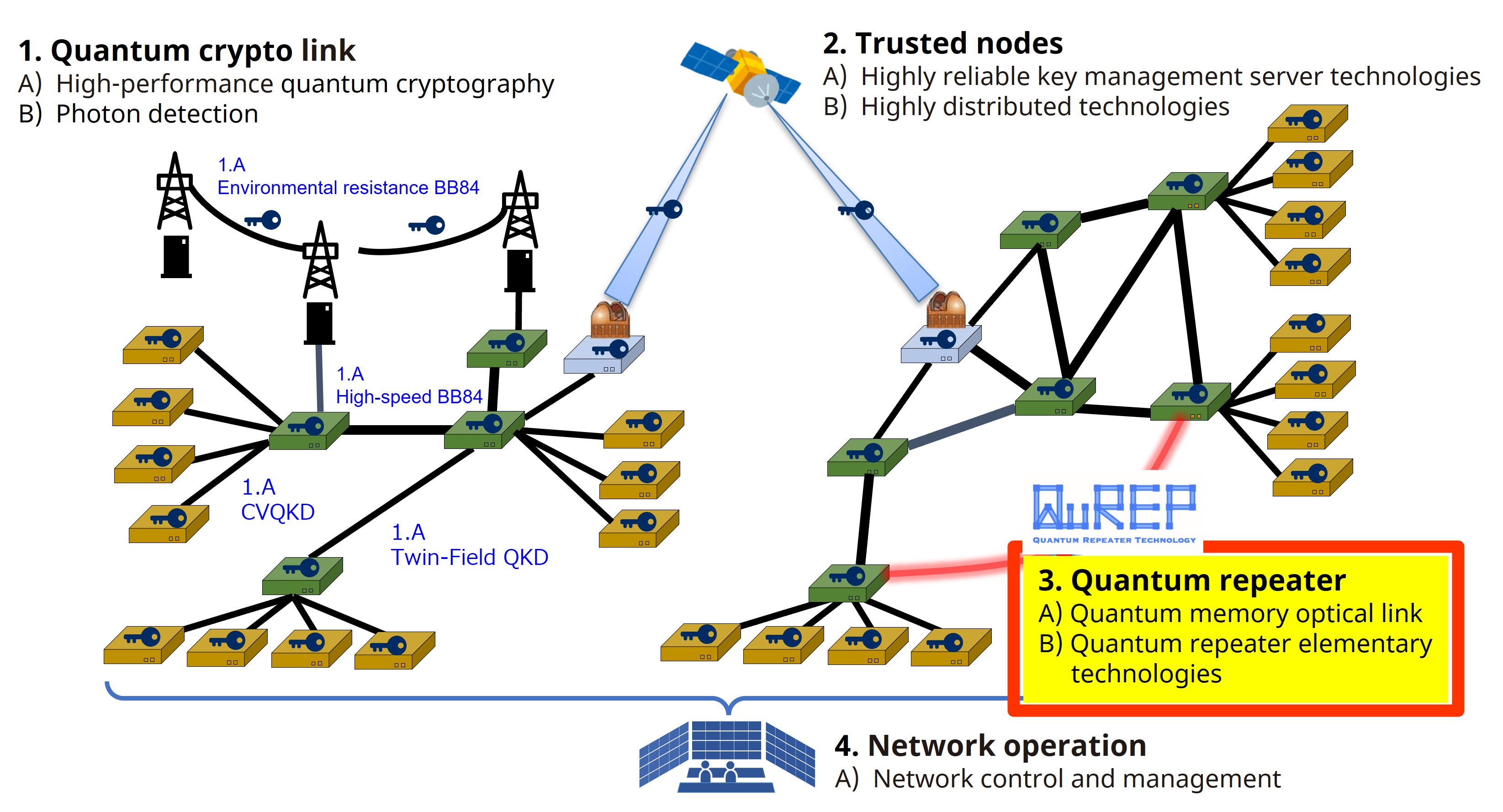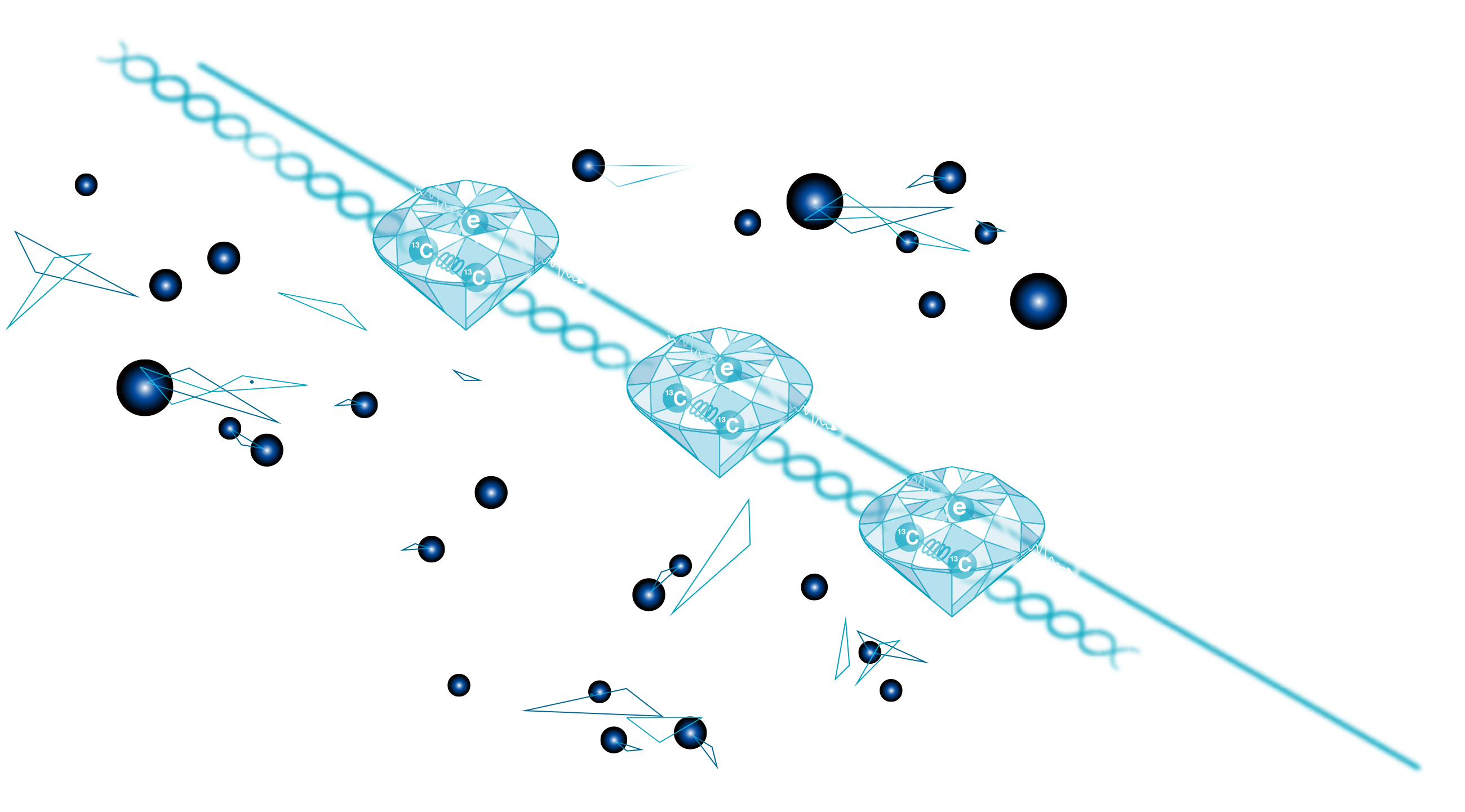Project Overview
Ministry of Internal Affairs and Communications national project: Research and Development for Building a Global Quantum Cryptography Communication Network.
– QUANTUM REPEATER TECHNOLOGY–
In this project, we aim to realize a quantum cryptography communication network on a global scale. We will contribute to establishing elemental technologies that ensure the exchange of confidential information between countries, important domestic organizations, and the medical and financial fields. Concretely, we aim to develop a quantum communication and cryptography link technology(I), a trusted node technology (II), a quantum repeater technology (III), and a wide-area network construction and operation technology (IV). These efficient technologies will enable faster and longer-distance communications.

Our R&D will allow “quantum repeater technology” to realize longer distance quantum cryptography and a more secure repeating of encryption keys in terrestrial systems when compared to that of trusted nodes. Specifically, we will develop a quantum memory technology that can maintain the quantum state at the repeater point of the network for a certain period. We will also develop peripheral devices and new fundamental technologies, such as an all-photonic quantum repeater and wavelength-multiplexed quantum repeater.
Quantum Repeater Technology: “Optical Link Technology for Quantum Memory” group
The “Optical Link Technology for Quantum Memory” group aims to develop a quantum memory technology that can maintain the quantum state at the repeater point of a network for a certain period. Furthermore, this group will develop peripheral devices and new fundamental technologies, such as an all-photonic quantum repeater and wavelength-multiplexed quantum repeater.
YNU will establish a high-speed and high-fidelity quantum manipulation technique in the quantum memory at the repeater point of the network, which is essential for the development of quantum repeater systems. YNU aims to improve quantum memory performance by increasing the speed and fidelity of quantum media conversion between quantum memory and photons, quantum entanglement generation within quantum memory, and the quantum entanglement measurement between quantum memories.
AIST aims to improve quantum memory performance and optical link efficiency. To achieve this, AIST will develop technologies such as charge stabilization by doping diamond, microfabrication of diamond electrical and optical structures, introducing defects into the diamond to enhance its functionality, and fabrication of diamond micro-optical resonators.
NIMS aims at the advancement of color centers, which are quantum bits. Specifically, NIMS will develop a crystal growth technology for diamond (100) crystal and (111) crystal growth to achieve high purity and single-photon source formation.
UTokyo will design diamond photonic crystal microcavities for high-performance quantum memory. UTokyo will also develop micropattern formation technology on the diamond to realize diamond photonic crystal resonators.
Quantum Repeater Technology: “Quantum Repeater Fundamental Technology” group
The “Quantum Repeater Fundamental Technology” group aims to establish fundamental technologies for quantum repeaters, including the advancement of peripheral technologies necessary for large-scale links between quantum memories and the investigation of new quantum repeating methods.
More information to come.
Furukawa Electric will develop a wavelength-multiplexed quantum repeater technology that interconnects many nodes using an optical fiber-type wavelength-multiplexed quantum entangled photon source in the optical communication wavelength band. The quantum wavelength conversion module technology will interconvert a wavelength-multiplexed photon into another wavelength where quantum memory can operate.
Quantum repeater technology requires quantum memories to generate quantum entanglement at high rates. YNU aims to fabricate optical fiber mounting modules that enable highly efficient optical coupling of a photonic interface for a diamond quantum memory to a single-mode optical fiber to form an inexpensive, compact, and stable system.
NICT will establish infrastructure technologies for integrating NV centers and superconducting single-photon detectors and contribute to detecting emission photons from NV centers with integrated superconducting nanowire single-photon detectors. NICT is also developing superconducting single-photon detectors with rapid response times.

